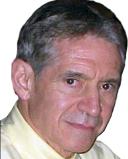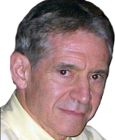Self-Help
SARS-COV-19: Possible Self-Help and Protection
Part 5: Specialized exercise and peptides help fight COVID-19.
Posted July 6, 2020
Recent research reveals mitochondrial dysfunction with reduced efficacy of adenosine triphosphate production (ATP). ATP cell depletion is “found in human muscle nearly a decade before accumulation of irreversible DNA damage that causes electron transport defects” (i.e., integral to ATP energy production). “New evidence points to reduction in activators of biogenesis” (i.e., tissue renewal and regeneration) and to “degradation of mitochondria allowing the accumulation of molecular and membrane damage in aged mitochondria. The early dysfunction appears to be reversible based on improved mitochondria in vivo and elevated gene expression after exercise training”(1).
Exercise gurus are probably aware that High-Intensity Interval Training (HIIT) not only increased lean mass and insulin sensitivity but also enhanced skeletal muscle mitochondrial respiration (i.e., the ability to convert macronutrients to ATP) and aerobic capacity (i.e., the ability of the heart and lungs to bring oxygen to the muscles). HIIT did this in young and especially older people by increasing cellular protein production for their protein-building muscle hypertrophying ribosomes and ATP producing mitochondria(2). My daughter-in-law, who is a professional trainer, explains what HIIT is succinctly:
“High-Intensity Interval Training (HIIT) has been shown to boost our bodies' ability to build mitochondrial proteins. To explain: HIIT is usually eight rounds of small bursts of high-intensity exercises for 20-30 seconds followed by a 10-20 second rest period. The exerciser takes a 30-45 second break before the next round begins. It can be done with just about every exercise from biking to walking. I used this technique in every one of my classes. Most students love doing it because they know a rest period is coming up soon. I like it because I know I really get them working hard, and I can tell when they have had enough. My oldest clients have moved up to two rounds of standing HIIT exercises and one round of sitting HIIT exercises.”
HIIT should be paired with resistance exercise or weight training to prevent sarcopenia (2) or the generalized and progressive loss of strength and muscle mass.
Cellular mitochondria fuel neural stem/precursor cell (NSCs) proliferation or neurogenesis observed in the hippocampus (which has a major role in learning and memory) of mice with treadmill exercise. Their decrease in neurogenesis begins in middle age, and exercise altered their brain chemistries in a manner favorable for the “proliferation, survival, and maturation” of NSCs(3). Mitochondria may do the same with exercise to restore aged muscle stem cells’ ability to activate and repair tissue after injury in mice, which lasted for approximately one week after the exercise ended(4). Yes, exercise is brain, muscle, and especially mitochondrial food. Prolonged higher-intensity exercise elevates the stress hormone corticosterone(5), and there is a higher incidence of upper respiratory tract infections (URTIs) among endurance athletes(6).
Exercise opportunities for the elderly are still quite limited. Asian countries, including China, Japan, Singapore, etc. encourage communal exercising, such as Tai Chi(7). It is often called a “soft” martial art and is practiced for health and spiritual benefits. It is noncompetitive and slow-paced, and it can be practiced for the entire lifespan. Yet, it burns as many calories as table tennis and more than surfboarding, while increasing strength, flexibility, body awareness, and physical and mental health.
For those not so inclined, taking a 30-minute daily walk, ideally where there is nature (e.g., green and/or water), will be very helpful. Nevertheless, everyone needs to exercise regularly for the prevention of illness, such as obesity and diabetes(8). Exercise gurus should know that skeletal muscle produces myokines, small proteins that have immunoprotective and anti-inflammatory properties so that surprisingly muscle can act as an immune-regulating organ.
Thymosin alpha 1 (Ta1) was the first peptide, made up of 28 amino acids, isolated (1977) from the thymus gland found behind the breastbone. Though it atrophies with age, its effects in T lymphocyte “training” to fight infection are lifelong. Ta1 regulates immune function by acting directly on its cellular system (e.g., dendritic, T helper, natural killer cells, etc.), affecting both adaptive immune response and inflammation.
An antigen is a toxin or foreign substance that induces an immune response, such as antibodies. Ta1 stimulates receptors, which are crucial for fighting the antigens related to bacterial, viral, fungal infections, cancer, etc. It also boosts the innate response to vaccine antigens. Because Ta1 is directly involved in “presenting” antigens to the immune system, it stimulates specific cytokine production against these antigens.
Ta1 has demonstrated increased survival and decreased viral load with acute influenza infections(9), which use the same receptor as COVID-19. The identical synthetic version of Ta1 is now approved in more than 35 countries to treat hepatitis B and C and boost immunity against other diseases. It is available on the internet.
This article is not meant to be used as medical advice. All decisions should be made between the reader and their health care provider and trainer.
References
1. Conley, K. E., Marcinek, D. J., Villarin, J.: Mitochondrial dysfunction and age. Current Opinion Clin. Nutrition Metabolic Care: Nov: 2007, 10, 6, 688-692. doi: 10.1097/MCO.0b013e3282f0dbfb
2. Robinson, M. M., Dasari, S., Konopka A. R., et al.: Enhanced Protein Translation Underlies Improved Metabolic and Physical Adaptations to Different Exercise Training Modes in Young and Old Humans. Cell Metab. 2017 Mar 7;25(3):581-592. doi: 10.1016/j.cmet.2017.02.009.
3. Wu, C-W., Chang, Y-T., Yu, L., et al: Exercise enhances the proliferation of neural stem cells and neurite growth and survival of neuronal progenitor cells in dentate gyrus of middle-aged mice. J. Applied Physiology 1 Nov 2008, 105, 5, 1585-94. doi.org/10.1152/japplphysiol.90775.2008
4. Aguilar, C. A.: Running makes old stem cells act young. Science Translational Medicine 06 May 2020: Vol. 12, Issue 542, eabb7092 doi: 10.1126/scitranslmed.abb7092
5. Ploughman, M.: Exercise is brain food: The effects of physical activity on cognitive function. Developmental neurorehabilitation. July 2008, 11, 3, 236-40. Doi.org/10.1080/17518420801997007
6. Mackinnon, L.: Chronic exercise training effects on immune function. Med. Sci. Sports Exerc. July 2000, 32, 7 Suppl S:369-376
7. Wiki How: How to do Tai Chi, Accessed May 4, 2020 7 pm.
8. Højlund, K., Mogensen, M., Sahlin, K., Beck-Nielsen, H.: Mitochondrial Dysfunction in Type 2 Diabetes and Obesity. Endocrinology and Metabolism Clinics of N. America, Sept. 2008, 37, 3, 713-731
9. King, R, Tuthill, C.: Immune Modulation With Thymosin Alpha 1 Treatment. Vitam Horm. 2016;102:151-78. doi:10.1016/bs.vh.2016.04.003.




